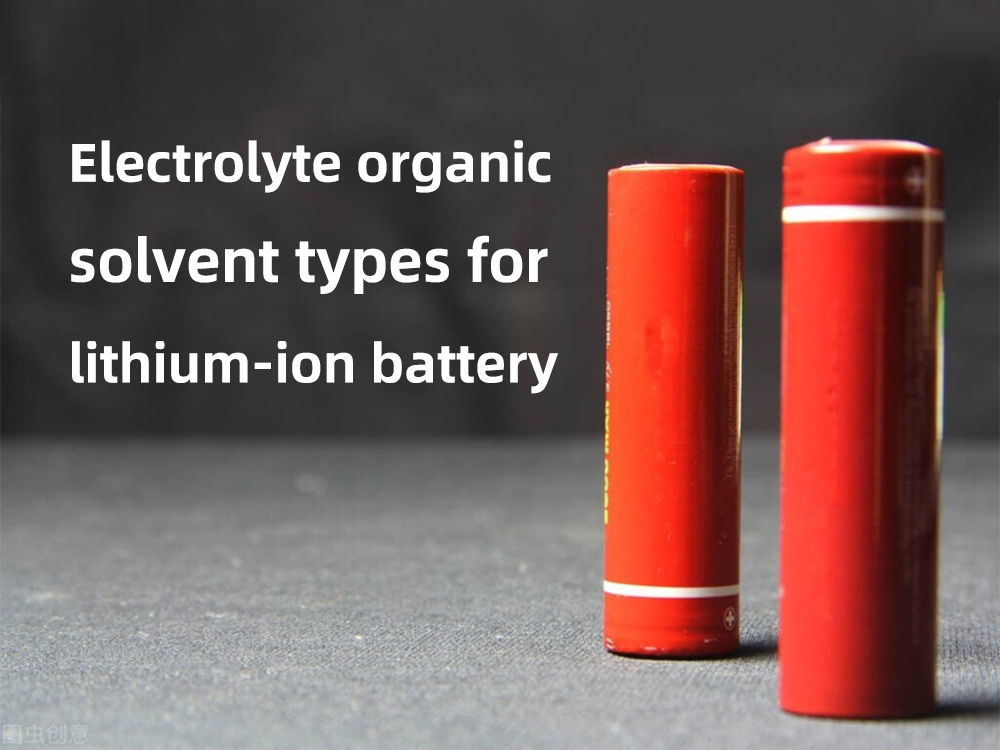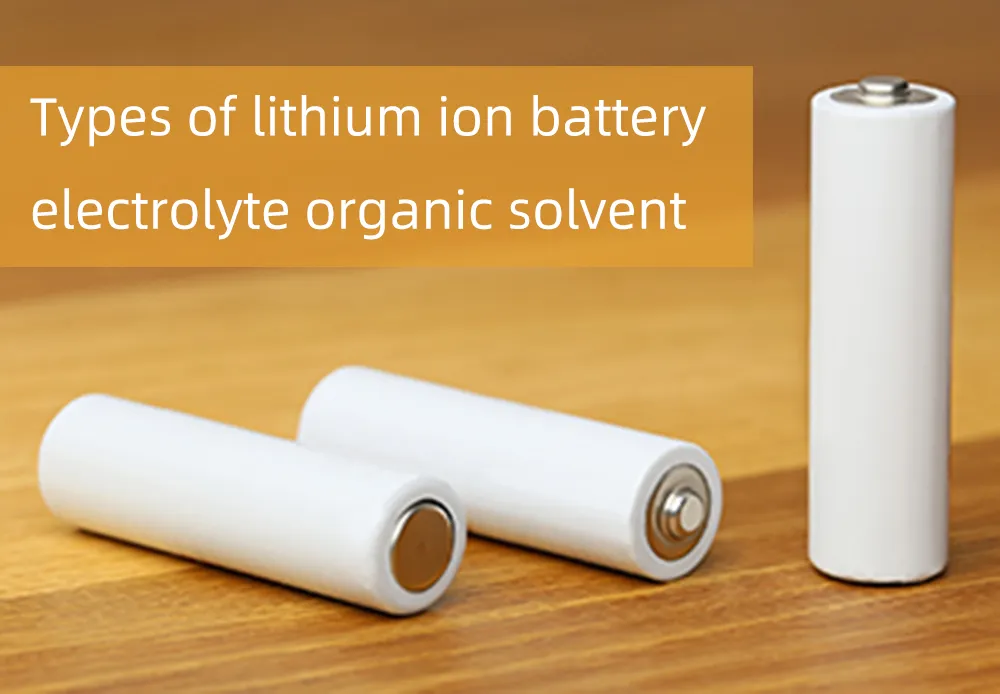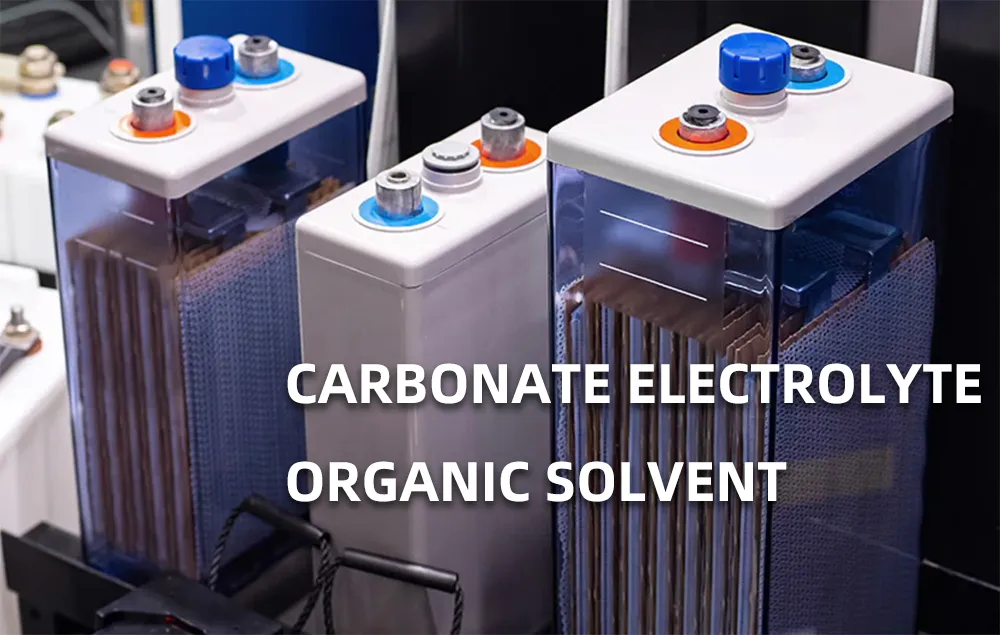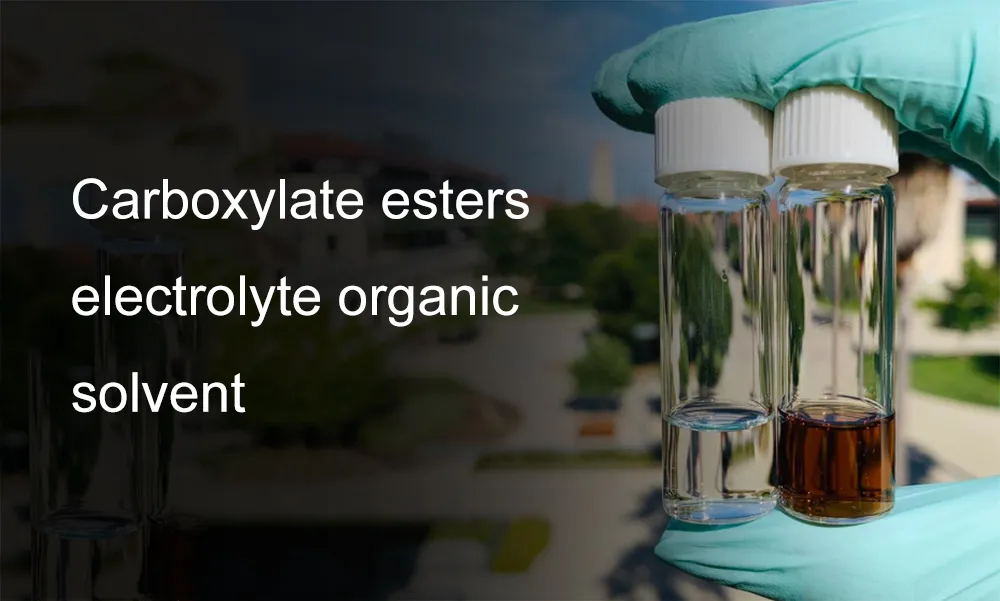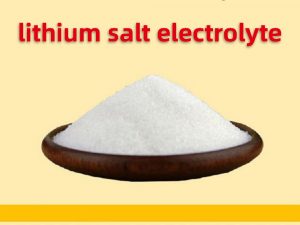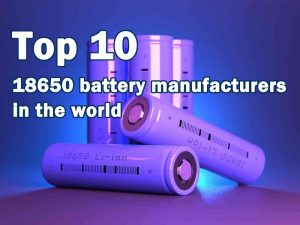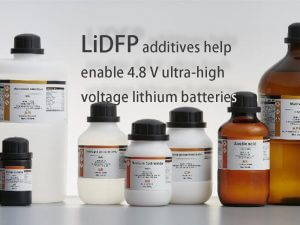Electrolyte organic solvent types for lithium-ion battery

The dielectric constant of electrolyte organic solvent directly affects the dissolution and dissociation process of lithium salts. The larger the dielectric constant, the easier it is to dissolve and dissociate lithium salts. The viscosity of the electrolyte organic solvent has an important influence on the moving speed of ions, the smaller the viscosity, the faster the moving speed of ions.
Therefore, the electrolyte of lithium-ion batteries tends to choose those electrolyte organic solvents with high dielectric constant and low viscosity. In actual situations, the viscosity of an electrolyte organic solvent with a high dielectric constant must be relatively large, and the dielectric constant of an electrolyte organic solvent with a low viscosity must also be small.
In practical applications, it is generally mixed with an electrolyte organic solvent with a large dielectric constant and an electrolyte organic solvent with a low viscosity to make a relatively large dielectric constant, and the mixed solvent with relatively small viscosity is used as the electrolyte of lithium ion battery. Therefore, by optimizing the composition of the electrolyte organic solvent, the electrolyte can obtain the highest possible conductivity.
As the best lithium-ion battery electrolyte solvent, it should meet the following requirements as much as possible:
● Low melting point, high boiling point and low vapor pressure, so that the working temperature range is wide;
● High dielectric constant and low viscosity, resulting in high conductivity;
Carbonate electrolyte organic solvent
Carbonate is the earliest electrolyte organic solvent used in the lithium battery industry, and has an irreplaceable position in the lithium battery industry. Carbonate solvents commonly used in lithium batteries can be divided into two types: cyclic carbonates and linear carbonates.
One is cyclic carbonate, ethylene carbonate (EC) and propylene carbonate (PC) are the two most important cyclic carbonate electrolyte organic solvents for lithium-ion battery electrolytes. PC is a colorless, transparent, slightly aromatic liquid at normal temperature and pressure, with a flash point of 128°C and a fire point of 133°C. PC has a low melting point (-49°C), and the electrolyte containing it still has high conductivity even at low temperatures.
In PC-based electrolytes, the process of lithium ion intercalation into graphite is accompanied by the co-intercalation phenomenon of PC. Additives or co-solvents are often added to form a stable SEI film on the surface of graphite electrodes, thereby inhibiting PC co-intercalation from damaging the electrodes. It is generally believed that propylene carbonate PC can effectively inhibit the crystallization of ethylene carbonate EC at low temperature, and can effectively improve the low-temperature performance of lithium ions.
The high and low temperature performance test results of the battery show that the discharge capacity of the battery containing PC is much higher at a high temperature of 70°C and a low temperature of -10°C than that of a battery without PC component electrolyte. The structure of EC is very similar to PC, there is one less methyl group than PC, which is the homologue of PC.
EC is a colorless crystal at room temperature, with a flash point of 160°C, higher thermal safety than PC, slightly lower viscosity than PC, and much higher dielectric constant than PC, even higher than water. It can fully dissolve or ionize the lithium salt, which is very beneficial to improve the conductivity of the electrolyte.
The thermal stability of EC is relatively high, and only a small amount of decomposition occurs when heated to 200°C, but it is easy to decompose under alkaline conditions, and can undergo transesterification with methanol to generate dimethyl carbonate or ethylene glycol. The miscibility of EC is higher than that of PC, and it can be miscible with water in any ratio.
The second is linear carbonates. Commonly used linear carbonates include dimethyl carbonate (DMC), diethyl carbonate (DEC), ethyl methyl carbonate (EMC) and methyl propyl carbonate (MPC). Linear carbonates usually have low viscosity and low dielectric constant, and cannot be used alone as good solvents for lithium-ion battery electrolytes, and must be used in conjunction with cyclic carbonates. DMC is a colorless liquid at room temperature, with a flash point of 18°C. It is a non-toxic or slightly toxic product and can form an azeotrope with water or alcohol.
DMC has a unique molecular structure, and its molecular structure contains functional groups such as carboxyl, methyl and methoxy groups, so it has a variety of reactivity. The structure of DEC is similar to that of DMC, and it is a colorless liquid at room temperature, with a flash point of 33°C, slightly higher than DMC, but also more toxic than DMC. DEC is soluble in ketones, alcohols, ethers, esters, etc., but hardly soluble in water, and has an odor similar to ether.
EMC and MPC are asymmetric linear carbonates, and their melting point, boiling point, and flash point are close to those of DMC and DEC. However, its thermal stability is poor, and it is easy to be heated or transesterified under alkaline conditions to generate DMC and DEC. Compared with cyclic carbonates, linear carbonates have low melting point, low viscosity, and low dielectric constant, and they are miscible with EC in any ratio.
The electrolyte prepared by mixed solvents of EC and DMC benefits from the advantages of the two solvents while making up for the disadvantages of the other, and has a good electrochemical stability window. At present, the electrolyte solvents for commercial lithium-ion batteries are mixed solvents composed of EC and one or two linear carbonates.
Carboxylate esters electrolyte organic solvent
The most important cyclic carboxylate solvent is y-butyrolactone (BL), which has been used in primary lithium batteries, the liquid range temperature is relatively wide, and the conductivity of the formed electrolyte is similar to that of the EC+PC electrolyte, and it can also form a passivation film like carbonate.
However, BL is easy to decompose when exposed to water, has high toxicity, and its cycle efficiency is much lower than that of carbonate electrolyte organic solvent, so it is rarely used in lithium-ion batteries.
Linear carboxylic acid esters mainly include methyl formate (MF), methyl acetate (MA), methyl butyrate (MB) and ethyl propionate (EP). The freezing point of these esters is 20-30°C lower than that of carbonates on average, and the viscosity is lower, so it can improve the low-temperature performance of the electrolyte.
Esters electrolyte organic solvent
Ether electrolyte organic solvent is divided into cyclic ethers, chain ethers, crown ethers and their derivatives. Cyclic ethers mainly include tetrahydrofuran (THF), 2-methyltetrahydrofuran (2-MeTHF), 1,3-dioxolane (DOL) and 4-methyl-1,3-dioxolane (4 -MeDOL), etc.
Chain ethers mainly include dimethoxymethane (DMM), 1,2-dimethoxyethane (DME), 1,2-dimethoxypropane (DMP) and diglyme (DG). Crown ether and cryptate can form a coating-type integration with lithium ions, greatly improve the solubility of lithium salts, and realize the effective separation of anion and cation pairs and the separation of lithium ions and solvent molecules.
This can not only improve the conductivity of the electrolyte, but also reduce the possibility of solvent co-intercalation and decomposition during the charging process, but the expensive and toxic crown ether compounds limit their application.
New electrolyte organic solvent
In order to improve the overall performance of lithium-ion batteries, people began to develop new electrolyte organic solvents. At present, the research work on new solvents is mainly focused on two aspects: non-flammable and flame-retardant electrolyte organic solvents. By introducing halogen atoms into commonly used electrolyte organic solvent molecules, the flammability of the electrolyte organic solvent can be reduced, or even completely inflammable.
Substituting the hydrogen atom of the methyl group in the PC molecule with a halogen atom gives new compounds such as trifluoropropylene carbonate (CF-EC) J67, it has very good physical and chemical stability, but also has a high dielectric constant, is not easy to burn, and can be used as a non-flammable solvent in lithium-ion batteries.
The flame retardant solvent not only does not burn itself, but also can prevent the combustion of other conventional electrolyte organic solvents through the gas phase flame retardant mechanism and the condensed phase flame retardant mechanism at the same time. For example, trimethyl phosphate (TMP) itself is an excellent flame retardant, and using it as an electrolyte organic solvent for lithium-ion batteries can undoubtedly significantly improve the safety of the battery.
TMP has good oxidation stability, but poor reduction stability, it is on the graphite electrode, when the negative potential is 1.2V, TMP is unrestrictedly reduced and decomposed in large quantities to produce gas products such as CH4, C2H4, etc. Adding co-solvents such as EC and PC can inhibit its reduction and decomposition. However, with the increase of co-solvent content, the non-flammability of the electrolyte decreased.
If you want to know more about the electrolyte industry, please refer to top 10 NMP solvent materials companies, top 10 lithium ion battery electrolyte company, and the following related articles.

